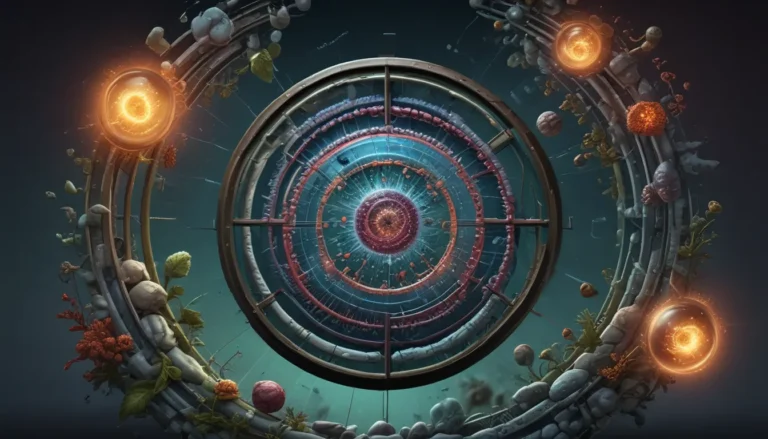A Note About Images: The images used in our articles are for illustration purposes only and may not exactly match the content. They are meant to engage readers, but the text should be relied upon for accurate information.
Are you curious about how scientists determine the age of ancient artifacts, geological formations, and fossils? Look no further than carbon dating, a powerful technique that allows researchers to unlock the mysteries of the past. In this article, we will take you on a fascinating journey through the world of carbon dating, exploring 17 intriguing facts that shed light on its significance and usefulness. From its discovery to its limitations, carbon dating has revolutionized fields like archaeology, geology, and anthropology, providing invaluable insights into Earth’s history. So, join us as we delve into the secrets of carbon dating and unravel the mysteries of the past.
Key Takeaways:
- Carbon dating acts as a time machine, helping scientists determine the age of organic materials like ancient artifacts and fossils.
- Despite its limitations, scientists continually improve carbon dating with new technologies to uncover the secrets of our history and nature.
Discovering the Age of Organic Materials
Carbon dating is a method used by scientists to determine the age of organic materials, covering a wide range of disciplines such as archaeology, geology, and anthropology. By analyzing the radioactive isotope carbon-14, researchers can gain valuable insights into the past, unraveling the timeline of Earth’s history and ancient civilizations.
The Science Behind Carbon Dating
At the core of carbon dating lies the isotopic ratio of carbon-14 to carbon-12 in living organisms. While carbon-12 is stable, carbon-14 is radioactive and decays over time. By measuring the ratio of these isotopes, scientists can calculate the age of a sample, providing a window into the past.
From Discovery to Recognition
Carbon dating was first developed by Willard Libby in the 1940s, leading to a groundbreaking discovery that earned him the Nobel Prize in Chemistry in 1960. This method has since been instrumental in dating ancient artifacts, fossils, and providing a deeper understanding of human history and evolutionary processes.
Exploring the Limits of Carbon Dating
While carbon dating can provide accurate age estimates up to around 50,000 years, it faces limitations beyond this timeframe. The decreasing amount of carbon-14 in samples makes it challenging to measure accurately, emphasizing the need for continuous improvement and innovation in this field.
Applications Beyond Ancient Artifacts
Carbon dating extends its reach beyond organic material from humans or animals—it can also date wooden structures, textiles, and ancient rock paintings. By studying these diverse materials, scientists gain insights into various aspects of our history and cultural heritage.
Advancements and Limitations
Despite its revolutionary impact on archaeology, carbon dating is not without its limitations. Contamination, sample quality, and calibration are factors that can affect the accuracy of results, highlighting the need for rigorous standards and continuous advancements in the field.
Evolution of Carbon Dating Techniques
Over the years, carbon dating has evolved with the introduction of accelerator mass spectrometry (AMS), expanding the range of materials that can be analyzed. By measuring smaller amounts of carbon-14, researchers have improved the accuracy of dating methods, enhancing our understanding of the past.
Unraveling the Mysteries of the Past
Carbon dating has debunked numerous fraudulent claims by testing the authenticity of artifacts and historical documents. By revealing inconsistencies or forgeries, this method has helped preserve the integrity of historical records and artifacts, paving the way for more accurate interpretations of the past.
Continual Evolution and Innovation
As new technologies and methods are developed, carbon dating continues to evolve and improve, enhancing its reliability and precision. By combining techniques like tree-ring dating and thermoluminescence dating, scientists can cross-validate their findings, ensuring more accurate results in their research.
Unlocking Ancient Wonders with Carbon Dating
Carbon dating plays a crucial role in studying migration patterns of ancient civilizations, tracking the movement of peoples and trade routes throughout history. By dating artifacts found in different regions, researchers uncover valuable insights into the interconnectedness of ancient societies.
Conclusion: A Window into the Past
In conclusion, carbon dating remains a cornerstone of research in archaeology and paleontology, providing invaluable insights into ancient civilizations and the natural world. By analyzing stable carbon isotopes in organic materials, scientists can calculate the age of specimens up to 50,000 years old, unlocking the secrets of the past. While carbon dating has limitations, its continuous evolution and innovation make it a vital tool for researchers exploring the mysteries of our history.
FAQs
-
What is carbon dating?
Carbon dating is a scientific method used to determine the age of ancient materials by measuring the amount of carbon-14 isotopes present in organic samples. -
How does carbon dating work?
By comparing the ratio of carbon-14 to carbon-12 isotopes in organic material, scientists can estimate the age of specimens up to 50,000 years old. The decay of carbon-14 at a predictable rate allows for accurate dating of organic materials. -
How accurate is carbon dating?
Carbon dating is generally accurate within a range of about 100-200 years for specimens up to 50,000 years old. Beyond this timeframe, the accuracy decreases due to the small remaining amount of carbon-14. -
What are the limitations of carbon dating?
Carbon dating is limited to organic materials containing carbon and is ineffective for dating specimens older than 50,000 years. Factors such as contamination and environmental changes can also affect the accuracy of results. -
Can carbon dating determine the exact age of a specimen?
No, carbon dating provides an estimate of the age within a specific range. Environmental factors and contamination can impact the accuracy of results, emphasizing the need for careful analysis and interpretation.
As you explore the fascinating world of carbon dating and its implications for understanding ancient civilizations, consider embarking on a journey to discover the archaeological wonders of Samarra. With its rich history and remarkable artifacts, Samarra promises an unforgettable adventure for those passionate about uncovering the mysteries of the past. Trust in our commitment to quality and authenticity as you venture into the realms of history and exploration, guided by the wonders of carbon dating.






